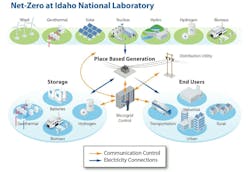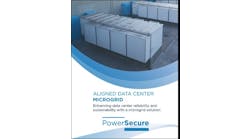SMR Nuclear Microgrids: They Might Become a Texas Thing if A&M Has its Way
Can small modular reactors become the big energy on campus?
Texas A&M University’s leaders think so. This week, University Chancellor John Sharp announced the school is offering land near the campus to four companies so they can build small modular nuclear reactors, or SMRs.
The CEOs from all four startups—Kairos Power, Natura Resources, Terrestrial Energy and Aalo Atomics—have agreed to begin preliminary moves to locate small reactor work to the 2,400-acre Texas A&M—RELLIS campus in Bryan, Texas, near the College Station school.
Nuclear: carbon free power for data centers and manufacturing of future
Many energy futurists say that SMRs can offer a kind of nuclear microgrid for upcoming energy challenges such as data centers and more efficient and less polluting industrial facilities. The exponential and relatively sudden rise in artificial intelligence training demand, as well as anticipated onshoring of future manufacturing to the U.S, is raising fears that the current utility grid resource mix will not prove adequate to the energy load required by the 2030s.
“Plain and simple: the United States needs more power,” Texas A&M’s Sharp said in a statement. “And nowhere in the country, other than Texas, is anyone willing to step up and build the power plants we need. Thanks to the leadership of Gov. Greg Abbott and others in Texas state government, Texas A&M System stands ready to step up and do what is necessary for the country to thrive.”
The national capacity of utility-scale nuclear energy receded in the past decades as first-generation power plants were destined for retirement or shutdown for economic reasons. Nuclear energy is the most expensive power generation resource to build, but reactor plants are known for long lifespans, high-capacity factors and producing carbon-free electricity.
The about-face of American economic energy thinking has inspired tech giants such as Microsoft, Google, Amazon Web Services and Oracle to create partnerships with advanced reactor and SMR technology companies. Natura Resources, for instance, is working with Abilene Christian University to produce a 1-MW molten salt test reactor on campus.
“We are thrilled to continue this partnership with the Texas A&M System to deploy our commercial system, the Natura MSR-100, on the Texas A&M-RELLIS campus,” Natura Resources CEO and founder Douglass Robison said. “We plan to showcase how our technology can address the energy needs of Texas and the nation.”
Terrestrial Energy plans to develop a technology called the Integral Molten Salt Reactor, or IMSR, at the Texas A&M-RELLIS site in Bryan. Aalo Atomics hopes to build six Aalo Pods at its site on the campus.
Reality check: SMR proving ground is spare
Though optimism is high, in reality there have been no commercial or even operational SMR built, completed or commissioned in the U.S. so far. Many observers contend it will be the early to middle 2030s before those projects can happen, if they do. Costs of construction and neighboring safety concerns could impede SMR progress.
And yet time is of the essence as data center capacity races ahead, perhaps as much as 50 additional GW of electricity demand by 2030, according to reports. Oil and gas giant Chevron USA recently announced a collaboration with investment firm Engine No. 1 and GE Vernova to create a series of natural gas-fired turbine power plants to supply data centers.
That partnership will advance fossil-fueled power generation. The carbon-free benefits of nuclear energy, both conventional and SMR, are a must-do if the future achieves an intersection of sustainability and power resiliency in next era of data storage and acquisition, proponents say.
Texas A&M’s Energy Proving Ground program contends that the new SMR projects can be built in five years.
“The agreements that the Texas A&M System has with Kairos, Natura, Terrestrial and Aalo are going to change the energy landscape for the whole country,” Joe Elabd, vice chancellor for research at the Texas A&M system, said. “The Energy Proving Ground will allow these companies to safely test their SMRs and set the stage for deploying small nuclear reactors across the country.”
Other startups making progress in developing potential small nuclear microgrids include Oklo, Terra Power and NuScale.
The Idaho National Laboratory has been working on research of small modular and prototype nuclear microgrid technology at its campus in Idaho Falls.
“Nuclear energy is absolutely essential to achieving national and international net-zero goals,” said John Wagner, INL director, for a 2022 story in Microgrid Knowledge. “We see this work as not only a core part of our mission, but also an opportunity to lead by example and reduce barriers to deploying emission-free nuclear energy technologies to local and global communities.”
The annual Microgrid Knowledge Conference will be in Texas and discussing power supply for data centers this spring. Microgrid 2025 is happening April 15-17 at the Sheraton Dallas.









